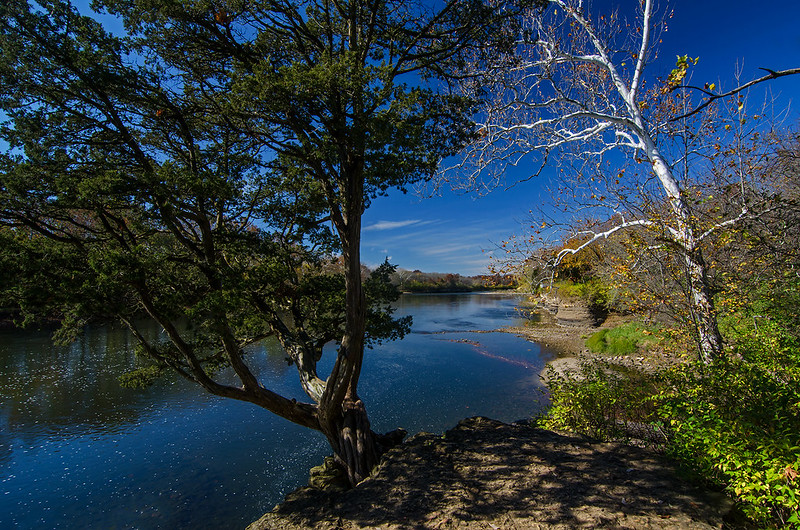
Off and on cold weather creates and destroys beautiful ice falls formed by the waterfall in LaSalle Canyon. Part of Illinois' Starved Rock State Park, the canyon is a bit of a hike from the visitor's center, but well worth the effort.
In wet times of year, a waterfall of approximately 20 feet tall flows into the canyon. In winter, the falling water freezes into intricate, and very large ice formations. The large undercut in the rock creates a shelter under the falling water, where visitors can hike. When frozen, the falls create an ice cave of sorts, giving hikers the opportunity to see the ice illuminated from behind.
The warming temperatures have broken some large chunks of ice away from the rock, but the cool overnight temperatures keep the ice growing from the top and bottom.

































